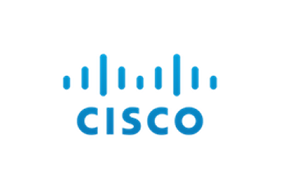Cisco's Striving for Sustainability: Meet Pelin
By Mary de Wysocki
Published 07-02-24
Submitted by Cisco Systems, Inc.

This blog is part of our focus on Cisco employees who are “Striving for Sustainability” by finding opportunities to integrate sustainability in their day-to-day work.
When I announced the company’s next generation environmental sustainability strategy, The Plan for Possible, last July, it led Cisco employees to wonder how to further integrate sustainability into their work. And this can be done in many ways, no matter what area you work in.
Meet Pelin Salem. She is a Radio Regulatory Technical Leader at Cisco who spearheaded an initiative on test optimization at Cisco to reduce testing time, improve energy efficiency, and help reduce greenhouse gas (GHG) emissions. She shares more about her interest in sustainability, her professional background, and how collaboration is vital when developing new climate solutions.
When did your interest in sustainability begin?
Pelin: I have always been connected to nature and animals, volunteering for environmental and animal welfare causes. As a 7th grader, I served on the youth leadership team for a Turkish non-governmental organization (NGO) known as the TEMA Foundation (The Turkish Foundation for Combating Soil Erosion). I organized a youth march to protest the pollution generated by an iron and steel works factory, which was very well received and helped the community acknowledge that the next generation is trying to do something good and help.
Later in my life, while living in Sonoma, California, during the fall of 2017 with my then 6-month-old daughter, we experienced the fear of a natural disaster when a fire burned down half of the surrounding neighborhoods, and ash rained from the sky for weeks. It was very heartbreaking, and several of our friends and colleagues woke up in the middle of the night to their houses burning, and they had to run away barefoot from their homes and lost everything they owned. It was a difficult time to see everyone suffer, and there were aftereffects, like the air quality not improving for several months in that region. Since climate change can exacerbate natural disasters like wildfires, I knew we could not continue what we were doing. It made me realize that I should do my absolute best to support sustainability initiatives.
Tell us more about your professional journey and what brought you to Cisco.
Pelin: My journey began with a bachelor’s degree in electrical engineering (EE), then I immersed myself in the defense industry while pursuing my master’s degree in EE. However, academia beckoned, and I seized the opportunity to embark on a Ph.D. journey. When my husband was offered a position at a newly established international research institution, King Abdullah University of Science and Technology (KAUST) in Saudi Arabia, I paused my studies to join him. At KAUST, I delved into bioscience pursuing a second master’s degree, driven by a desire to merge my radio frequency (RF) expertise with biomedical research that could make a positive impact on humankind. After a rewarding break to focus on raising my daughter and completing my Ph.D., I found my professional home at Cisco in January 2019. The company’s supportive culture and leadership resonate deeply with me, and I envision it as where I’ll build my future career and retire someday.
Can you explain how you started your work supporting sustainability at Cisco?
Pelin: I currently work as a Radio Regulatory Technical Leader within the Corporate Compliance team under the Product and Component Operations Team. Prior to my current role, I served as a New Product Introduction Test Development Engineer within the Industrial Internet of Things business unit (IOTBU). During my time in the IOTBU, I focused on designing manufacturing test lines in the factories for new products. This involved close collaboration with our manufacturing partners to design efficient test lines.
Cisco’s commitment to quality meant rigorous testing of products, which contributed to GHG emissions, especially in energy-intensive testing areas like the 2-Corner and 4-Corner test sections where the manufactured Cisco products are tested at the high-low temperature and voltage specification limits to support top performance at the edges of the defined operational conditions. 2-Corner testing is done at High Temperature – High Voltage and Low Temperature – Low Voltage corners, whereas 4-Corner testing has additional corners as follows: High Temperature – Low Voltage and Low Temperature – High Voltage. Limited capacity in these areas could lead to delays in production schedules.
To tackle these challenges, I initiated the “Test Optimization Dashboard” project in March 2021. This project aimed to automate and visualize the impact of test optimization efforts, reducing the time needed for optimization and increasing team enthusiasm. Working closely with sustainability subject matter experts (SMEs), we developed methods to measure GHG emissions reductions resulting from optimization.
After successful pilots, I presented our findings to executives, gaining support for wider implementation across business units. Transitioning to automated workflows streamlined the optimization process, significantly reducing manual entry. Collaborating with experts, we developed plans for further improvements, including an artificial intelligence (AI)-based model to estimate energy consumption.
Our ongoing efforts include collecting data to train AI models for GHG emissions tracking. By highlighting the environmental impact of testing processes and advocating for optimization, we aim to advance sustainability, product quality and innovation.
This sounds like a complex project. What kind of support did you receive for it?
I am grateful for all the SMEs collaborating with me on this Cisco-wide effort. Cisco has top talent in such diverse areas, and I feel privileged to know them and get to work with them. My current organization was also supportive and provided me with the space to continue contributing to Cisco’s sustainability goals beyond my “regular job” duties.
I am forever grateful that our Executive Vice President and General Manager of Cisco Networking Jonathan Davidson opened such important doors for me and this project, and his support was invaluable for the Test Optimization Dashboard to reach a 75% enablement rate across Cisco. Receiving invaluable support and guidance from my executive mentors and sponsors immensely helped ideate, locate resources, and develop solutions that can help advance sustainability in manufacturing processes.
We know it takes a multifaceted approach when it comes to sustainability. What can Cisco employees do in their day-to-day jobs to help reduce our company’s environmental impact?
Pelin: Everybody can do so much. For example, Cisco has a goal that 100% of new Cisco products and packaging incorporate Circular Design Principles by Cisco´s fiscal year 2025. And, in another example, packaging engineers are helping to eliminate plastic bags, papers, and remove accessory items that are not required for a standard configuration in our packaging wherever possible.
Some engineers at Cisco work on IoT technology used in smart building technology that senses when lights should be turned off or blinds should be lowered. And our operations team moved away from paper cups and other single-use items in our break rooms and cafeterias.
Is there anything you do in your personal life to be more sustainable, and if so, what advice do you have for others?
Pelin: At home, I prioritize sustainability by reducing waste, conserving energy, choosing environmentally friendly products, supporting local and organic options, minimizing water usage, utilizing lower-emissions transportation (driving an electric vehicle or using public transit, keeping flight GHG emission scores under consideration when choosing flights, etc.). I also educate my daughter (who just turned 7) on making better choices for the planet.
Let’s start small with actions like recycling properly, conserving energy, and supporting local businesses. Every effort, no matter how small, helps to contribute to a more sustainable future.
Thank you for giving me this opportunity to share my story and I hope it will be inspiring for others to start making change for a more sustainable future within their domains.
View original content here.

Cisco Systems, Inc.
Cisco Systems, Inc.
About Cisco
Cisco (NASDAQ: CSCO) is the worldwide leader in technology that powers the internet. Cisco inspires new possibilities by reimagining your applications, securing your data, transforming your infrastructure, and empowering your teams for a global and inclusive future. Discover more on The Network and follow us on Twitter.
About Cisco's Purpose
Cisco’s purpose is to Power an Inclusive Future for All. From increasing access to skills needed to thrive in a digital economy to supporting the most vulnerable in times of crisis, we’re committed to using our technology for good. Cisco is also leveraging our scale and innovation to help ensure that our increasingly digital future is sustainable, inclusive, and resilient.
More from Cisco Systems, Inc.

